Thanks to the meter tree, people in Lang Khe commune, Con Cuong district have risen above poverty. Photo: Van Truong
"Friend" companion of the people
The meter bamboo tree is actually a type of wild bamboo, often called meter by Nghe An people. Right from the moment of germination, they have brought many benefits to the people. Previously, local people used meter bamboo as a source of food to relieve hunger during the lean season. Nowadays, meter bamboo is not only a traditional dish but also processed into a specialty, brought to the lowlands for consumption, contributing to increasing income.
For the people of the highlands, although life is increasingly prosperous, bamboo shoots are still a familiar dish, closely associated with Thai cuisine. Bamboo shoots can be grilled to make salad, pickled to make pickled bamboo shoots for storage, and combined with many other dishes.
Not only for food, when the tree is old, people also use it as building materials for stilt houses, camps, fences, water wheels, water troughs and plant it along the riverbank to prevent landslides. Household items such as baskets, trays, sieves, winnowing trays, etc. are also made from the tree, demonstrating the close connection of this tree species with people's lives.
A hill of meters in Con Cuong district is being harvested. Photo: Van Truong
Life changed thanks to meter tree
In early April, we went to Lang Khe commune, Con Cuong district, where people’s lives have changed significantly thanks to planting meters. At the foot of low hills, along streams and creeks, are lush green bamboo forests. Not far away, solid houses have sprung up, demonstrating the prosperity of the people thanks to this crop.
Currently, people are in the season of harvesting meters, trucks full of meters are busily transporting them downstream. This year's meter price is stable and quite high. Mr. Vi Van Tinh, a meter grower in Lang Khe commune, said that each meter tree costs from 25,000 to 35,000 VND, depending on the size. With 1.5 hectares of meter growing area, his family earns about 35-40 million VND per year, after deducting expenses, he still makes a profit of about 30 million VND.
“Mét is a perennial crop, only needs to be planted once and can be harvested for 40-50 years without much care. Traders are now buying directly from the farm, and the prices are good, so people are very excited to expand the area,” Mr. Tinh shared.
People in Chau Khe commune, Con Cuong district transport meters to National Highway 7 to wait for trucks to load goods. Photo: Van Truong
Previously, the meter tree in Con Cuong district was mainly planted in small scale, serving the weaving needs of the people. Nowadays, with the policy of developing the forest economy, people have expanded the meter planting area in the direction of planning the raw material area. According to data from the Department of Agriculture and Environment of Con Cuong district, the locality currently has more than 3,300 hectares of meter planting area, concentrated in the communes of Chau Khe, Bong Khe, Chi Khe, Binh Chuan, Lang Khe, Mon Son, Luc Da, Cam Lam... Annually, it brings in revenue of 12-15 billion VND.
Not only in Con Cuong, Tuong Duong district is also promoting the planting of meters, helping people increase their income. Mr. Vi Van Vinh, a resident in Tam Lien village, Tam Quang commune, commented that planting meters requires little effort, low cost but brings high economic efficiency. My family alone has nearly 2 hectares of meters, with a density of 200 meter bushes/ha, each bush has dozens of trees, can earn 60 million VND/ha/year.
Mr. Cao Anh Khoa, in Cay Me village, Tam Thai commune, Tuong Duong district, purchases and processes meters. Photo: Van Truong
According to Ms. Kha Thi Hien - Chairman of Tam Quang Commune People's Committee, the commune currently has 800 hectares of mt planted along Lam River and streams, with more than 600 households participating. Income from mt planting reaches an average of 50-60 million VND/ha, contributing significantly to the work of hunger eradication and poverty reduction.
Tuong Duong district currently has about 1,600 hectares of bamboo, concentrated in the communes of Yen Thang, Nhon Mai, Thach Giam, Tam Dinh, Tam Thai, and Tam Quang. The district People's Committee has implemented the Project on developing bamboo and bamboo raw material areas for the period 2021-2025, with the goal of expanding the planting area to more than 32,000 hectares. Of which, 21,200 hectares will be intercropped, 9,260 hectares will be newly planted, and at the same time, the existing area will be sustainably exploited.
Mr. Nguyen Huu Hien - Vice Chairman of Tuong Duong District People's Committee, emphasized: "The district is focusing on exploiting the potential of the meter tree to create sustainable livelihoods for the people. In particular, thanks to the support from livelihood development programs, we have implemented the project "Replicating the sustainable livelihood model from developing meter trees according to the value chain". In which, Tam Hop and Tam Quang communes were supported with 1.6 billion VND, and Tam Dinh, Tam Thai, and Thach Giam communes received funding of more than 1.7 billion VND."
Pulp and paper processing line for votive offerings from meter trees in Tam Thai commune. Photo: Van Truong
To make the meter planting project effective, forest rangers and related units have organized silvicultural technical guidance for people, helping meter trees increase productivity and ensure sustainable development.
Purchasing and processing meter trees on the spot
Currently, the output for the meter tree in Tuong Duong district is quite stable. In addition to traders from many places coming to buy, the locality also has on-site processing facilities, helping farmers feel secure in production without having to worry about output. One of the typical facilities is the meter processing workshop of Mr. Cao Anh Khoa, in Cay Me village, Tam Thai commune, Tuong Duong district.
Mr. Cao Anh Khoa, from Dien Chau district, has been attached to Tuong Duong for a long time and saw the development potential of the meter tree. Realizing the large market demand, he invested in a processing line to turn meter into fast food chopsticks to serve the domestic market and export to Asian countries.
Each year, his facility exports about 5,000 tons of metric chopsticks to the market. According to Mr. Khoa, this product is very popular, especially in Taiwan and some countries in the region. Recently, the domestic demand for metric chopsticks has also increased sharply, and at times, his facility cannot produce enough to supply.
Mr. Cao Anh Khoa next to the paper votive products produced from meters, ready for sale. Photo: Van Truong
In order to maximize the value of the meter tree, Mr. Khoa not only produces chopsticks but also finds ways to process by-products to reduce waste. Previously, each ton of meter could only use 230-300 kg to make chopsticks, the rest was wasted. Since 2021, his facility has invested in upgrading technology to take advantage of the surplus during the processing process, producing more paper blanks and pulp - raw materials for domestic and foreign paper mills. Currently, his facility supplies about 9,000 - 12,000 tons of paper raw materials each year, with the meter source mainly purchased from Con Cuong and Tuong Duong districts, bringing in a purchase value of 7-8 billion VND each year.
In addition to contributing to the consumption of a large amount of cassava for local people, this processing facility also creates stable jobs for dozens of workers in Tuong Duong and Con Cuong districts, helping to improve the lives of many households.
People pack meters into rafts on Lam River and bring them to Cao Anh Khoa's meter processing facility for sale. Photo: Van Truong
From small-scale planting, the meter tree has now become an important raw material area, helping thousands of households escape poverty and move towards a more prosperous life. With the attention from the government and development support programs and projects, the meter tree promises to continue to be a sustainable economic pillar for the people here.
AD Advertisement
Source: https://baonghean.vn/cay-met-vang-xanh-cua-nguoi-dan-mien-tay-nghe-an-10294337.html


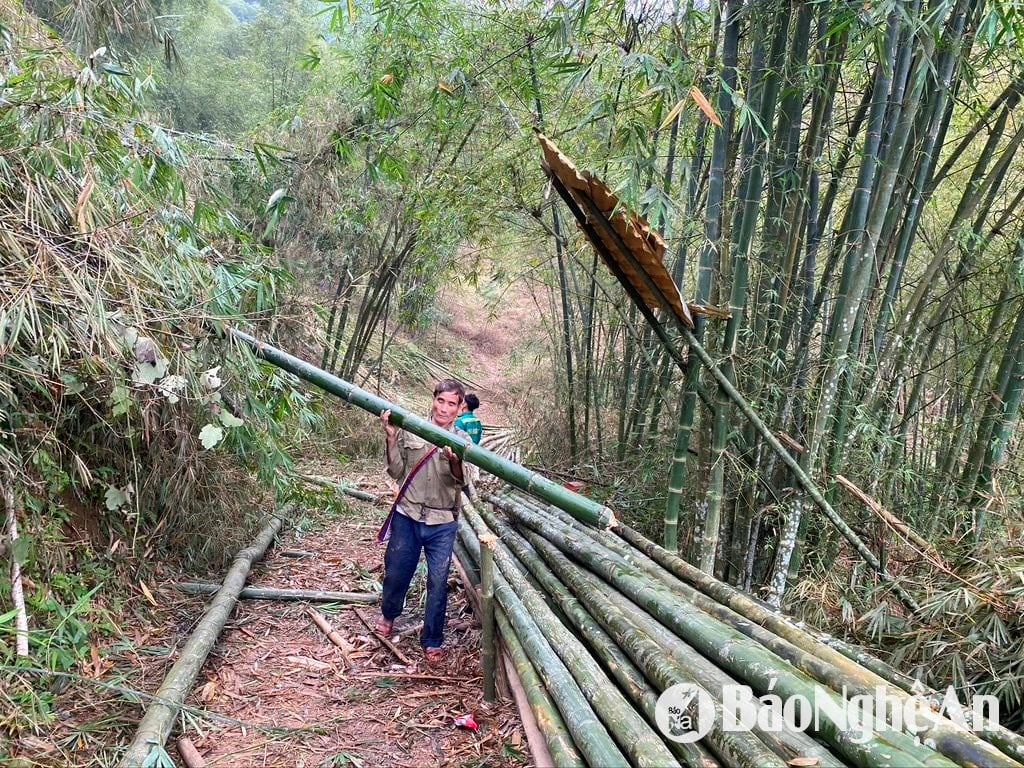

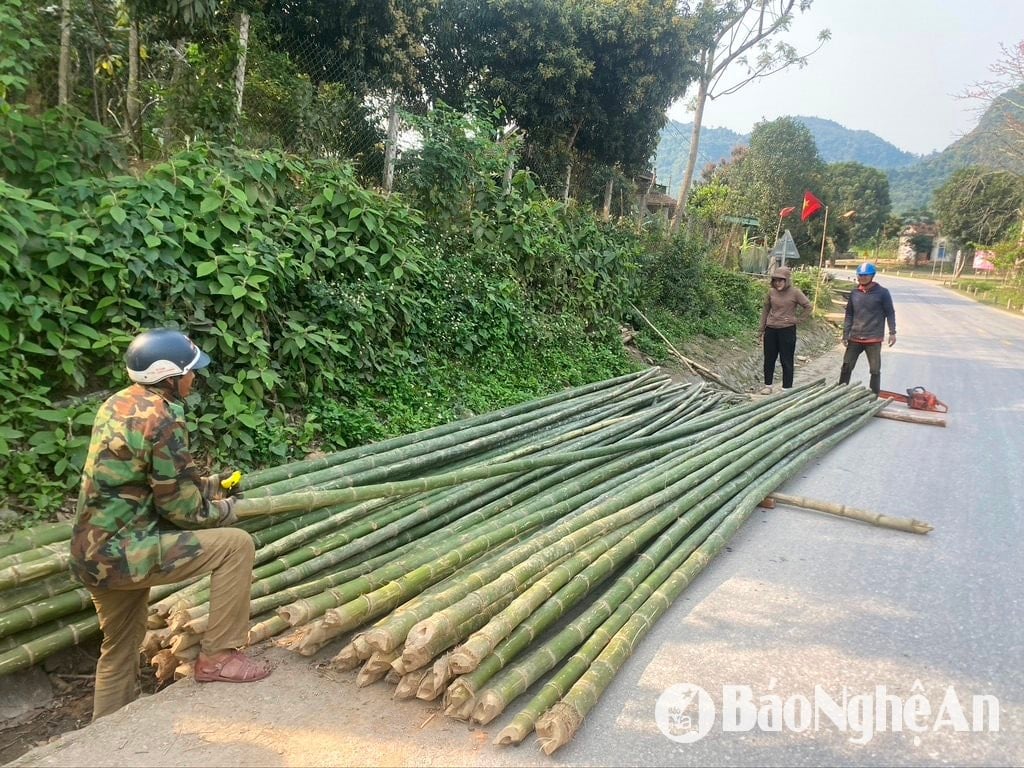

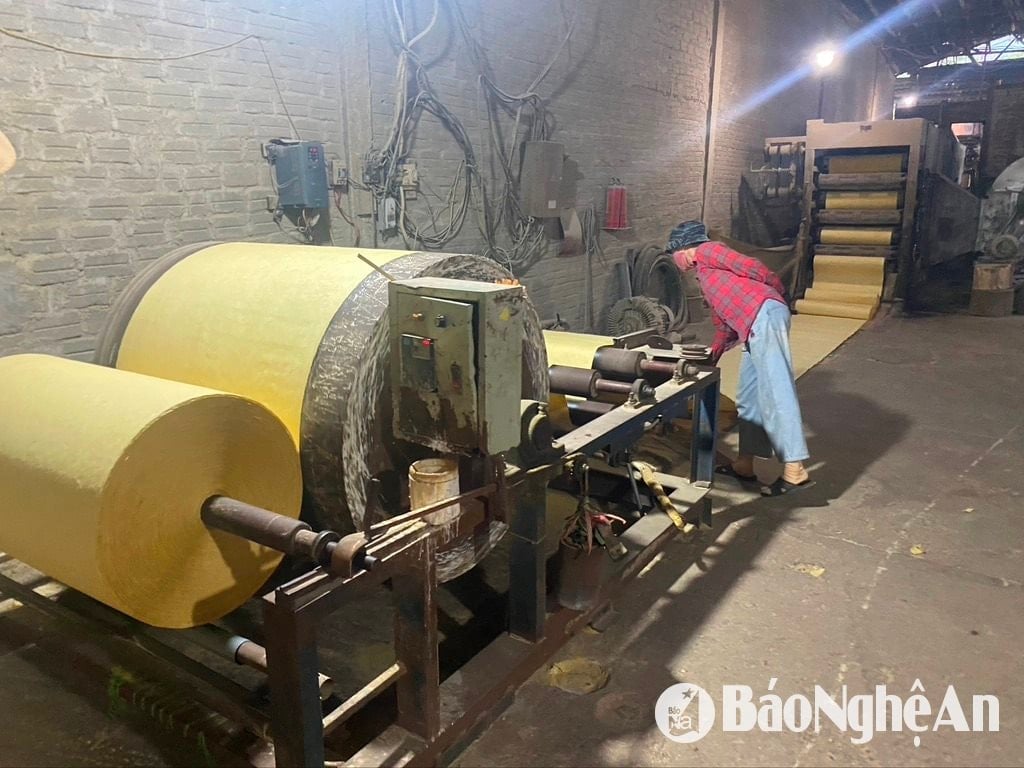
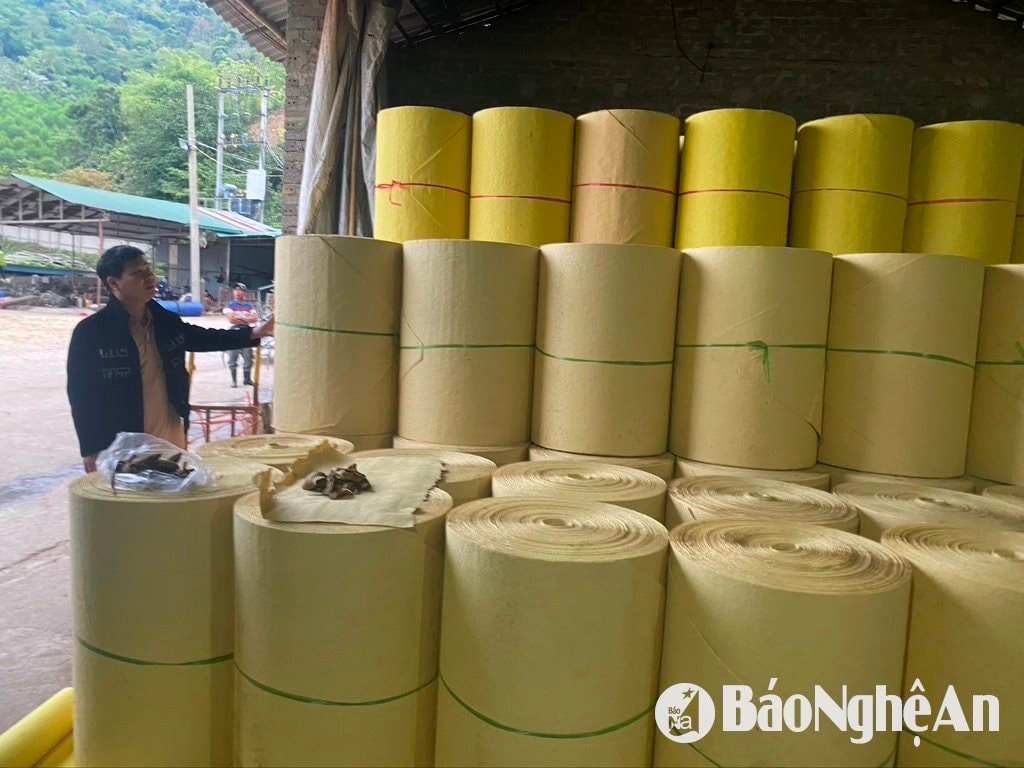
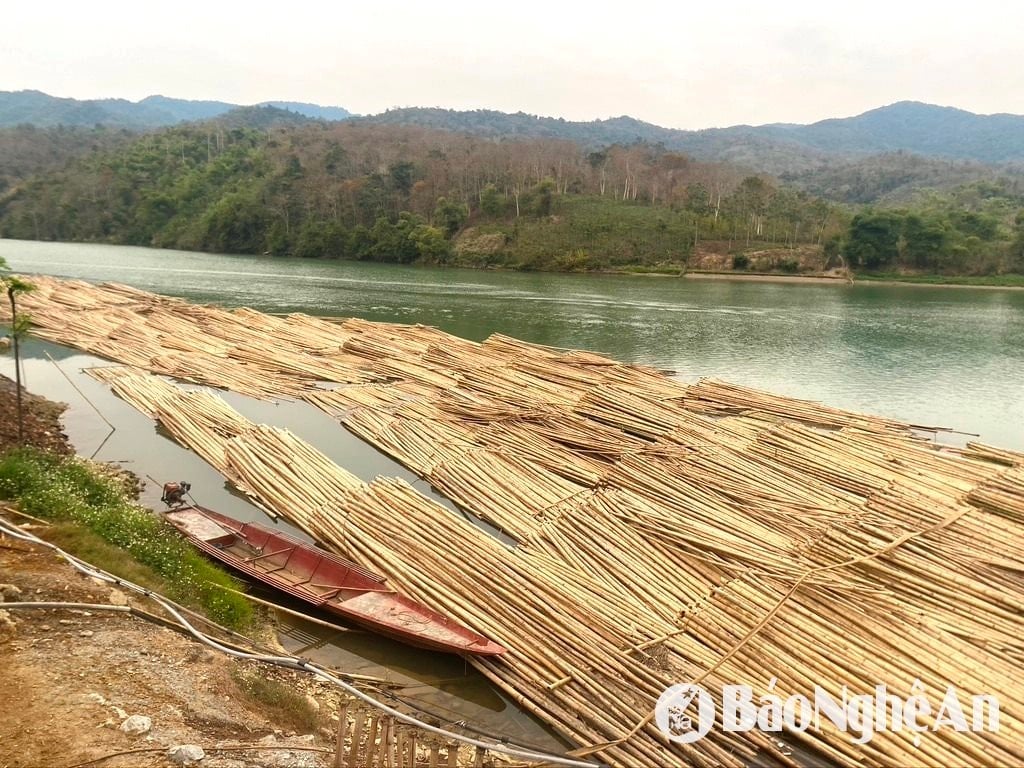
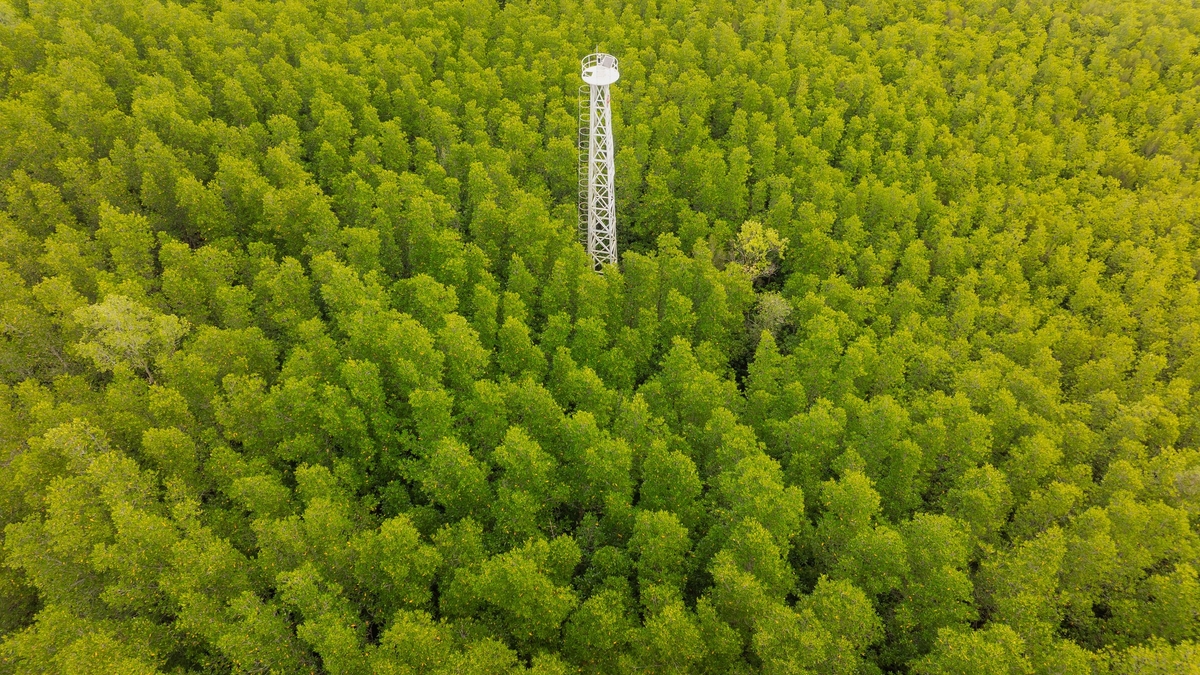
![[Photo] Binh Thuan organizes many special festivals on the occasion of April 30 and May 1](https://vphoto.vietnam.vn/thumb/1200x675/vietnam/resource/IMAGE/2025/5/1/5180af1d979642468ef6a3a9755d8d51)

![[Photo] Bustling construction at key national traffic construction sites](https://vphoto.vietnam.vn/thumb/1200x675/vietnam/resource/IMAGE/2025/5/2/a99d56a8d6774aeab19bfccd372dc3e9)

![[Photo] "Lovely" moments on the 30/4 holiday](https://vphoto.vietnam.vn/thumb/1200x675/vietnam/resource/IMAGE/2025/5/1/26d5d698f36b498287397db9e2f9d16c)

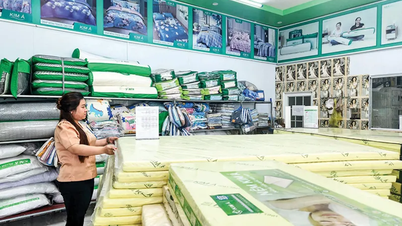
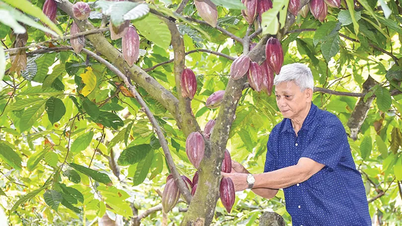
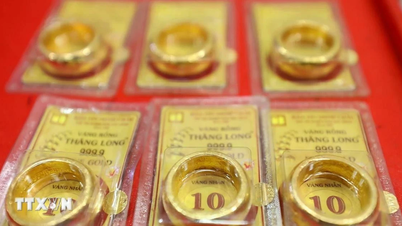

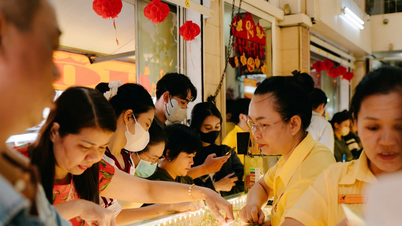





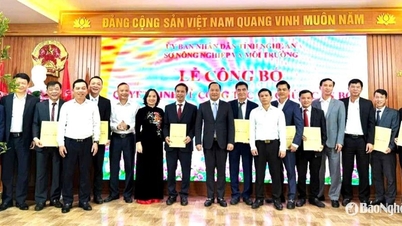



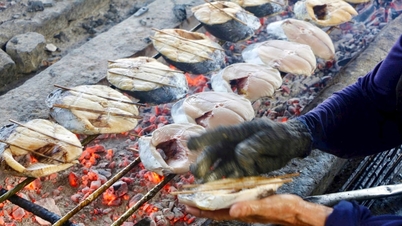
![[Photo] Ha Giang: Many key projects under construction during the holiday season](https://vphoto.vietnam.vn/thumb/1200x675/vietnam/resource/IMAGE/2025/5/1/8b8d87a9bd9b4d279bf5c1f71c030dec)





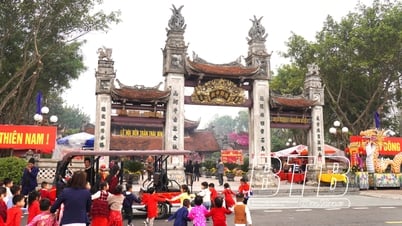
















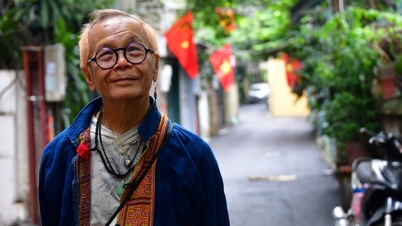


































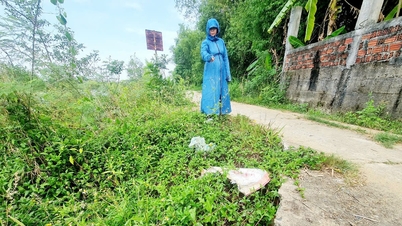


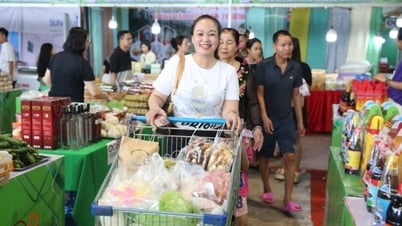

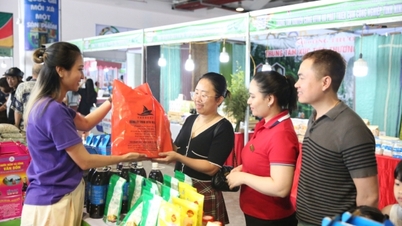



Comment (0)